Sigma C 100-400 mm f/5-6.3 DG OS HSM
3. Build quality and image stabilization
Photos below allow you to assess the dimensions of the tested Sigma both in a folded position and at its longest. We positioned it between the Canon EF 70-300 mm f/4.0-5.6 USM and the older Canon EF 100-400 mm f/4.5-5.6L IS USM.
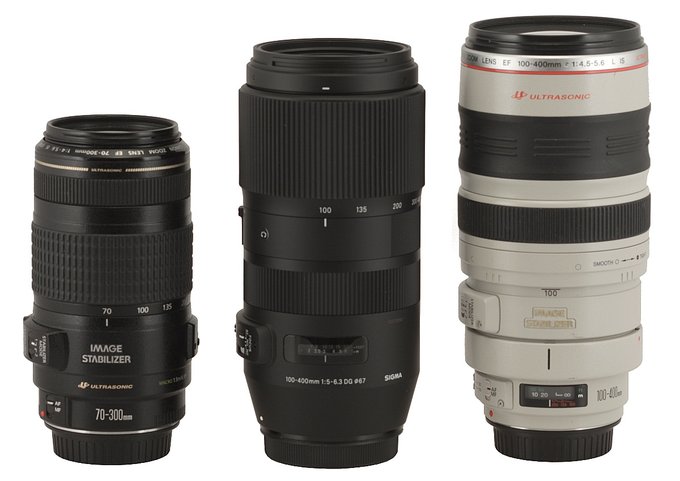 |
Please Support UsIf you enjoy our reviews and articles, and you want us to continue our work please, support our website by donating through PayPal. The funds are going to be used for paying our editorial team, renting servers, and equipping our testing studio; only that way we will be able to continue providing you interesting content for free. |
- - - - - - - - - - - - - - - - - - - - - - - - - - - - - - - - - - - - - - - - - - - - - - - -
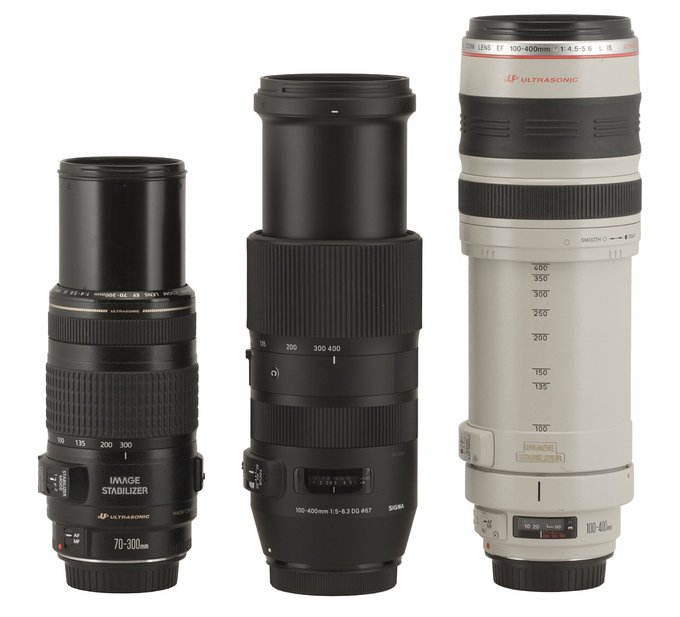 |
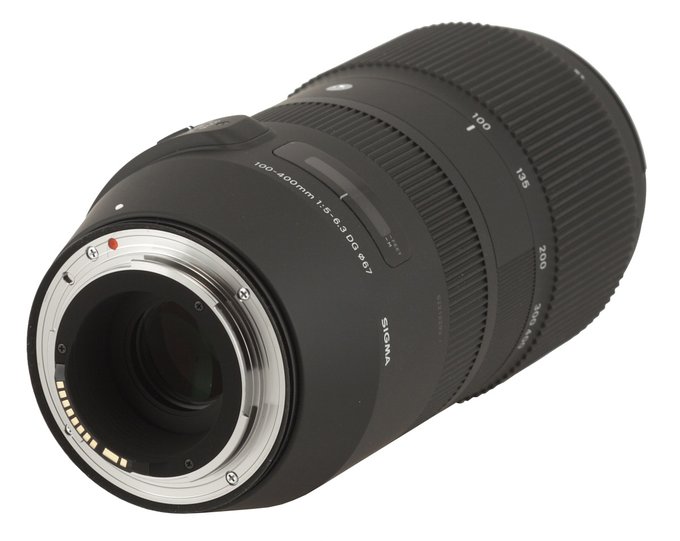 |
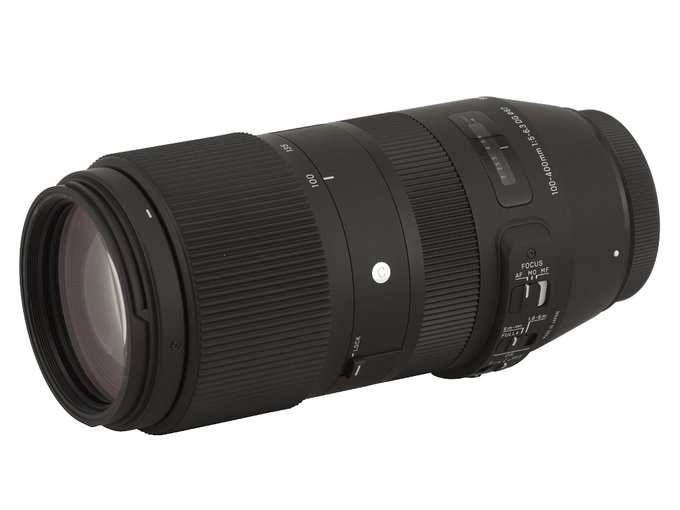 |
Then you find an immobile part of the casing with a „C” mark meaning the lens belongs to the “Contemporary” series and a LOCK switch for blocking the position of the zoom. Unfortunately it works only at 100 mm. It might come in useful from time to time as the front element system has a slight tendency for zoom creep when you move the lens more vigorously.
An aperture ring, as wide as 47 mm, is the next part of the lens. Most of it is covered by comfortable, rubber ribs; under them you see focal length marks at 100, 135, 200, 300 and 400 mm. The ring moves evenly and is properly damped.
The rest of the lens consists of a small part of the casing with the front element system and a hood mount. That part extends with the increase of focal length on a uniform, quite solid tubus. As a result the length of the lens increases by 6 cm.
The front element is 61 mm in diameter and just slightly sheltered by the casing; it is surrounded by a filter thread, 67 mm in diameter, which doesn’t move.
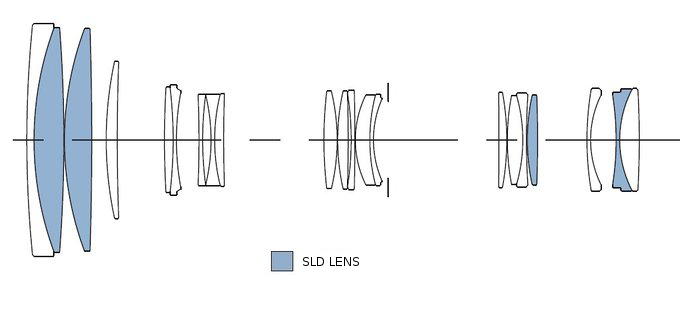 |
Buyers get in the box two caps and a hood. The lens doesn’t offer you a possibility to use a tripod adapter. The hood has distinct thumb indents so, if you put your fingers in those places you can change the focal length value comfortably using a push/pull mechanism action, similar to the ‘pump’ known from old Canon devices.
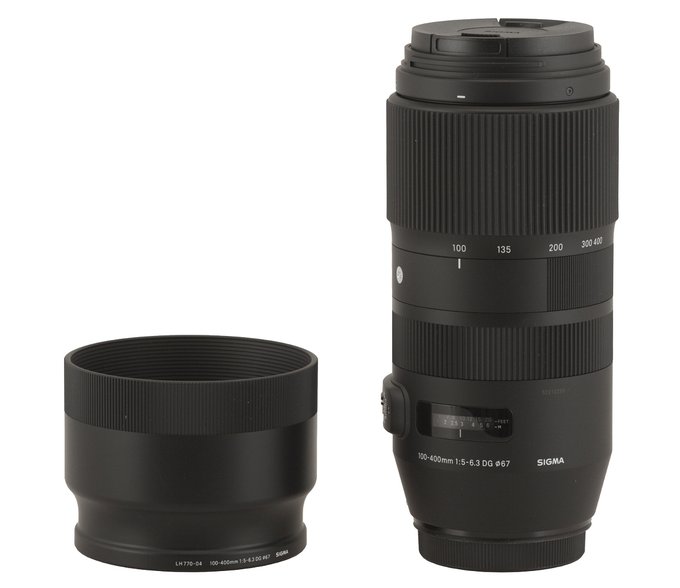 |
Optical stabilization
In order to check the optical stabilization unit’s efficiency we set the focal length at 400 mm and, for every available exposure time ranging from 1/400 to 1/4 of a second we took several dozen photos with the stabilization switched on and off. Then we calculated the percentage of blurred photos for every time of exposure. The appropriate graph, showing that percentage, correlative with the exposure time expressed in EV (and the 0 EV point corresponds to 1/320 of a second), is presented below.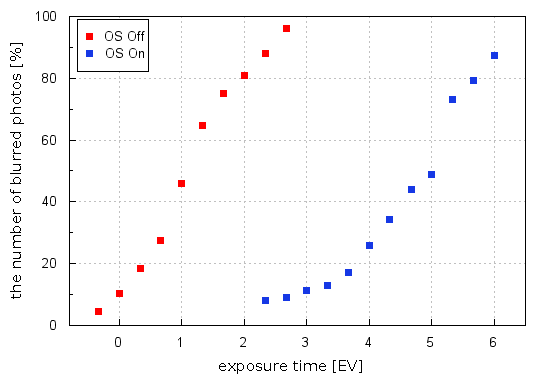
As you see the maximum distance between both curves amounts to 3.7-3.8 EV and such is the efficiency of the new Sigma’s stabilization mechanism. It is a really good result but we should mention the fact that the Sigma is still actually a bit worse than its brand name rivals. The Canon EF 100–400 mm f/4.5–5.6L IS II USM was as efficient as 4 EV, and the Nikkor AF-S 80–400 mm f/4.5–5.6G ED VR could reach even 4.3–4.5 EV.






